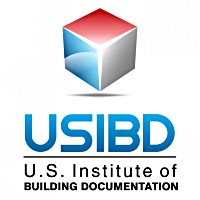.jpg)
USIBD releases first Cornerstone Report to help develop fledgling industry
The U.S. Institute for Building Documentation (USIBD) on Tuesday released its first edition of the Cornerstone Report, a review of the current state of the 3D imaging industry based on responses and opinions from service providers and consumers.
The Cornerstone Report is a quarterly review of select aspects of the building documentation industry to help professionals identify where the industry is positioned and where it is heading.
The first edition is based on results of a recent online survey the trade group conducted by asking 21 industry-related questions. Ted Mort, USIBD technology chair, told SPAR the number of respondents to the survey was in line with expectations, given it was the first conducted.
So, how often is 3D imaging used in the building documentation industry? Well, more than three-quarters of respondents said their clients used 3D imaging in just 25 percent of their projects. “That leaves a huge opportunity out there for us!” USIBD said in the report.
Indeed, nearly 75 percent of building documentation professionals responding to the survey said they expect client use of 3D imaging to increase by 50 percent in the next year. “That’s not a big surprise, seeing that most of us recognize our projects as being completed with success but underutilized for the value they could provide,” according to the report.
“If we could show clients how to raise the value of the products we deliver from 25 percent to 50 percent, you’ll see the beginning of an industry explosion,” Mort said. So, where are clients learning about 3D imaging and its benefits? Mort said there’s really no formalized introduction to it. Many clients learn about 3D imaging through word of mouth.
The survey results show that awareness is being attributed evenly across three sources:
- publications
- peer interaction
- seminars
A much smaller percentage is being attributed to education, prompting the USIBD to ask in the report whether that meant an opportunity to engage organizations for professional credits.
3D imaging seems to have a recognized value when it comes to creating the foundation for construction with 70 percent of respondents doing pre-construction work. That’s almost as much as those doing work in both the construction and post-construction phases combined. “With so many clients looking to use 3D imaging on future work, there may be an opportunity to engage more [clients]performing construction and post construction phases, especially when 70 percent of us feel as though our clients could gain much more value from the service than they do currently.”
Meanwhile, the majority of respondents provide services for both new construction and renovation projects, only 43 percent focus on serving one or the other. Out of those specializing in one area, 11.5 percent are in new construction and 88.5 percent do renovation work.
But does it pay to perfect your craft in a specific market?
- New construction only: 75 percent of projects were less than $25,000
- Renovation only: 49 percent were less than $25,000
- Both new construction and renovation: only 31 percent were less than $25,000
And, 65 percent of respondents are providing 3D imaging products to clients with over 100 employees.
“We’re working on several things in our Standards Committee to help provide some clarity for end users and service providers out there,” Mort said. The next Cornerstone Report is scheduled for release in October, following an industry survey the month before. That report will focus on hardware products in the industry, including laser scanners, Mort said.
One question from the first Cornerstone Report offers a glimpse into the attitudes of building documentation professionals toward hardware and software manufacturers. Asked about their level of satisfaction with hardware and software manufacturers, a majority of respondents are ‘satisfied’ with the balance of respondents evenly split on ‘very satisfied’ or ‘not satisfied.’
Here’s some of the most common comments about hardware and software manufacturers:
- Improvement is needed in customer service
- Overstated capabilities
- Software price point is too high
- Interoperability is deficient
Formed in April 2012, the USIBD’s goal is to establish and promote building documentation as a “distinct industry” by developing industry standards for ethical business practices to be codified in a manual.
The plan is to use the manual in establishing a Certified Building Documentation Professional (CBDP) certification program by 2017 for service providers based on a core set of principles and best practices.
Other documents will be developed such as RFP Templates and Specifications for Owners to use for procuring building documentation services, along with a Bid Scoring Guide.






